#carcharocles megalodon
Photo

Ancient Elasmobranchii
#carcharocles megalodon#megalodon#ctenacanthus amblyxiphias#ctenacanthus#falcactus falcactus#falcactus#Stethacanthus altonensis#Stethacanthus#Ironing-Board Shark#aquilolamma milarcae#eagle shark#orthacanthus#paleoart#ancient sharks#prehistoric#prehistoric art#shark#sharks#my art#q
134 notes
·
View notes
Text
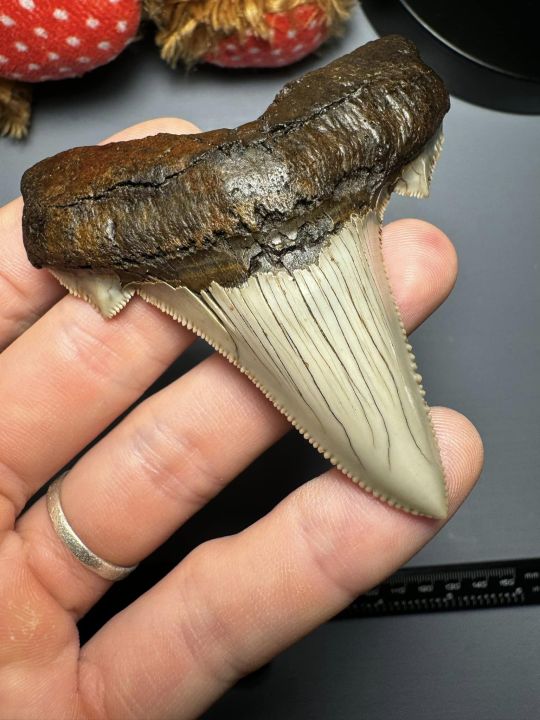
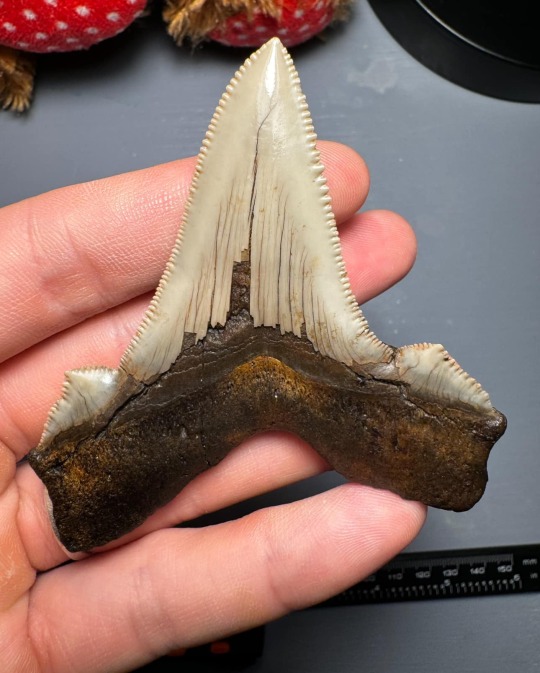
Carcharocles auriculatus
8 notes
·
View notes
Text

And now, to meet our contestants:
Two famous beasts, on one side we have the current biggest non filter feeding shark and on the other we have the biggest shark to ever live (that we know of).
Some facts.
Great White (Carcharodon carcharias): the great white can reach up to around 5,8m (19.1 feet), besides being the greatest fear for people on the beach, they're pretty harmless to humans, we're not a 5* course meal and they usually attack when they confuse us with a seal. Their eyesight is horrible. As any animal, it can also attack if it feels threatened.
Megalodon (Carcharocles megalodon): it lived during the miocene and pliocene around 23 to 3,6 millions ago. Megalodon is from a line of giant sharks, presumably from the Otodontidae family. With the lack of bones and only teeth, its hard to really estimate it's size but it could've reached 20 meters (67ft).
48 notes
·
View notes
Note
Kind of out there idea but prehistoric au for Lemon? Perhaps it's one of Lemon's verrrrrrrrry distant ancestors so think the megalodon and she's captured by prehistoric man for food but they find she's quite the horny little Carcharocle~
8 foot tall Lemon....
She's captured and bound but they caught her during the mating season, so she's in crazy heat when she gets tot he surface. Instead of killing and eating her, the entire community takes turns fucking her and taking care of her massive belly as she gets bigger with their children
4 notes
·
View notes
Text
Traduction du français vers l'espagnol de l'article Le mégalodon, plus grand prédateur marin connu, n’a finalement pas ressemblé au requin blanc, selon une étude du journal Libération
Página principal/Ciencias/Arqueología
Ciencias
Al final, el megalodón, el mayor depredador marino conocido, no pareciéndose al jaquetón blanco, según un estudio
El debate queda abierto entre los investigadores a propósito de su aspecto y tamaño, estimados entre 15 y 20 metros de longitud. Un estudio publicado el lunes 22 de enero le atribuye el aspecto de un tiburón mako y no de un jaquetón blanco.
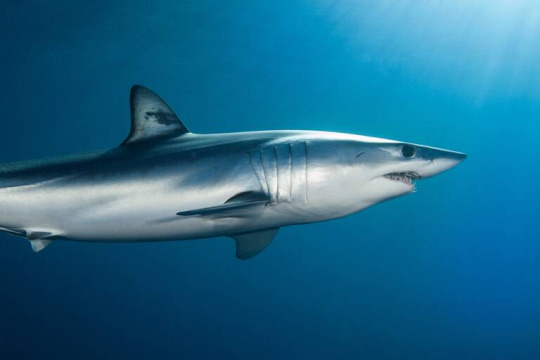
El megalodón se habría parecido más a un marrajo que a un tiburón blanco. (Richard Robinson/Cultura Creative. AFP)
por Sascha Garcia y AFP
publicado el 22 de enero de 2024 a las 11h37
Un temible depredador marino con grandes dientes y un lado impresionante… Pero quizá no tan grande como se imaginaba. Un estudio, publicado este lunes 22 de enero en la revista Palaeontologia Electronica, describe al megalodón, una de las mayores criaturas marinas que han existido, como más delgado de lo que se había representado hasta ahora.
El megalodón, cuyo nombre científico es Carcharocles megalodon, desapareció de los océanos hace 3,6 millones de años, y muchos investigadores siguen intentando reconstruir su aspecto y tamaño, estimado entre 15 y 20 metros de longitud, a partir de los escasos restos disponibles. Este margen de error se explica por el escaso número de fósiles que quedan, dientes incompletos y conjuntos de vértebras.
Similar al tiburón Mako
“Nuestro equipo reexaminó el registro fósil y descubrió que el Megalodón era mucho más delgado”, de lo que se pensaba, dijo el biólogo Phillip Sternes, de la Universidad de California en Riverside, en un comunicado. “No obstante, habría sido un depredador asombroso, en la cima de la cadena alimentaria marina”, añadió el autor principal del estudio. En lugar del impresionante lado del jaquetón blanco, el animal habría tenido el aspecto del actual tiburón mako, mucho más esbelto. Basándose en este nuevo análisis, los investigadores le atribuyen un comportamiento muy específico. No habría necesitado cazar muy a menudo debido a su larguísimo tracto digestivo, acorde con su gran tamaño.
Este aspecto también podría haber resultado una desventaja cuando llegaron depredadores más fornidos, pero también más rápidos que él. Según Kenshu Shimada, paleo-biólogo de la Universidad DePaul de Chicago y coautor del estudio, el megalodón “podría no haber sido un nadador potente” en comparación con el jaquetón blanco. Aunque una de las teorías que explican la extinción del megalodón se basa en la escasez de sus presas, ahora los investigadores estadounidenses plantean otra hipótesis. “Una combinación de factores llevó a su extinción, pero uno de ellos pudo ser la aparición del jaquetón blanco, que quizá era más ágil y, por tanto, mejor depredador que el Megalodón”, explica Phillip Sternes.
En última instancia, para tener una representación exacta de la verdadera forma de este animal, habría que hacerse con un esqueleto más completo que los escasos elementos de que disponen los paleontólogos. Kenshu Shimada es más poético: “El hecho de que no sepamos exactamente cómo era el Carcharocles megalodon da rienda suelta a la imaginación.” Cada uno puede imaginar cómo podría haber sido este terrorífico monstruo marino.
Referencia:
ES · ¡Hola a todos! La traducción de esta semana se refiere a un artículo sobre la posible forma del megalodón, un animal que me fascina y me aterroriza…
¡Disfruten de la lectura!
FR · Bonjour tout le monde ! La traduction de cette semaine porte sur un article consacré à la potentielle forme qu'avait le mégalodon, un animal qui me fascine et me terrifie à la fois…
Bonne lecture !
1 note
·
View note
Text
Honestly the potential that Megalodon looked more like the Sand Tiger Shark it would be more terrifying, interesting and beautiful cause for me Great Whites only look scary when you take account of their size but Sand Tigers already look broodingly mysterious and unpredictable and when you add the size...
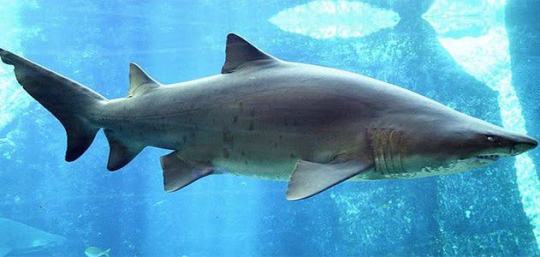

Anyway Sand Tiger Otodontidae Meg > Great White Lamnidae Meg
#sand tiger shark#shark#megalodon#carcharocles megalodon#great white shark#palaeontology#palaeoblr#science#biology#marine biology#fish#fossil
56 notes
·
View notes
Photo


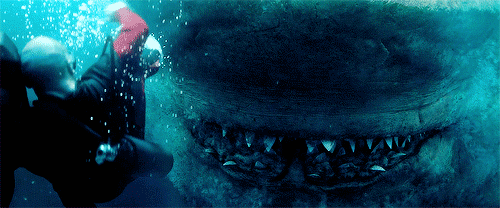

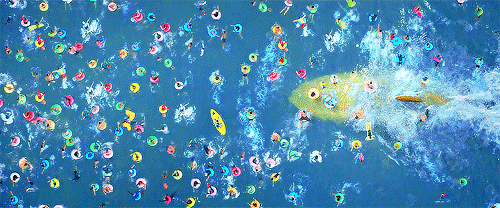
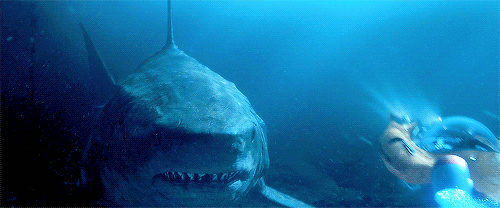


The Meg (2018)
#the meg#carcharocles megalodon#shark#animals#long post#creature feature#mine#this shark design is fucking divine#q
68 notes
·
View notes
Photo

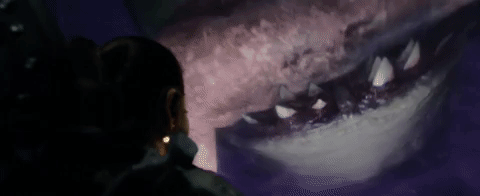





58 notes
·
View notes
Text
The date is 24 May 2014 and I am browsing across East Lane Beach at Bawdsey in southeast Suffolk. A brown lump of sandstone with a white fossil shell impression catches my eye. A boxstone. This is the first one I have ever found with a fossil in it. Looking closely, I see that the sea has abraded the shell’s outlines, although the margins have survived better than the rest, so it should be possible to identify the specimen (Fig. 1).
Fig. 1. Boxstone, found 24 May 2014.
Boxstones are fragments of a vanished world. They are all that remains of a lost geological stratum in Suffolk called the ‘Trimley Sands’ (Balson, 1990), although deposits of similar age are still present across the sea in Belgium and other parts of Europe. Boxstones are lumps or concretions of brown sandstone, which may contain shell fossils and – if you are extremely lucky – bones and teeth. They are beach-rolled and rounded, and typically measure between 5 and 15cm in diameter. The sand is mostly quartzose, with a rich assemblage of secondary minerals, and is cemented with carbonate-fluorapatite (a phosphate mineral) and calcite (Mathers and Smith, 2002). Boxstones can be found scattered sparsely across the shingle beaches at Bawdsey and Felixstowe Ferry (Fig. 2), and in situ as a common component of the basement beds (nodule beds) at the base of the Coralline Crag and Red Crag formations of southeast Suffolk (Fig. 3). They are eroding out of the cliffs and probably also from some offshore location. In former times, they could also be found in the small phosphorite quarries that dotted that local landscape:
“With one exception all the masses of sandstone I have seen thus picked out from the diggings have been spherical, oblong or irregular masses about the size of the fist, or an average, or sometimes of an elongated cylindrical form. The exception was in a pit at Trimley, near Ipswich, where I found four blocks of a flagstone shape about a foot and a half square, which contained casts of shells, and seemed to be identical in origin with the box-stones” (Mathers and Smith, 2002).
Fig. 2. Felixstowe Ferry beach, looking across the Deben Estuary to Bawdsey beach – both likely places to find boxstones.
Boxstones are an enigma that has attracted the attention of geologists and palaeontologists since the nineteenth century; and molluscan fossils have played a key role in unravelling the mystery. Unfortunately, preservation of the fossils is not good, because those with aragonite shells have dissolved away, leaving only mould and cast impressions (Fig. 4), while those with calcite shells (a far fewer proportion) show only patchy preservation (Fig. 5). The cavities may then be infilled with quartz (Fig. 8), iron oxide or calcium carbonate (Mathers and Smith, 2002). Writing in 1870, Prof ER Lankester was able to identify a fauna of some 25 molluscan genera. Over the years, the list grew. Frederick Harmer (1902) listed 17 species and, by 1917, Alfred Bell had recorded over 100 (Bell, 1917; Figs. 6 and 7). The fossils are not easy to reach because the sandstone matrix is so tough – luckily my own specimen was exposed due to marine action. Also, not all boxstones contain fossils. There are varying estimates of the proportion of the stones that do: the Rev H Canham suggested 75%, but Prof PGH Boswell believed that it was less than 10% (Boswell, 1928). However, in my experience, Boswell’s figure is the more correct. Very occasionally, other types of fossil are found, for example, wood, crustaceans (crabs and lobsters), coronulids (whale barnacles) and sharks’ teeth (Fig. 9), with a notable example of the latter being Carcharocles megalodon, figured by Reid (1890, figure 1). The exterior of boxstones may be encrusted with epifauna, most commonly barnacles (Fig. 10). These are evidence of submarine exposure before burial, most likely during the Pliocene.
Fig. 3. The Red Crag basement bed at East Lane Beach, Bawdsey, showing phosphatic mudstone (coprolite) pebbles and a boxstone (centre).
Dating the boxstones
Lankester was able to use his molluscan fossils to correlate the boxstone fauna with a better-preserved geological sequence in Belgium. He suggested it was of Diestian age (Lankester, 1870) in the Pliocene – an interval now attributed to the Tortonian to Messinian stages of the late Miocene (Laga et al, 2001). More recently, Peter Balson has correlated the fauna with the Syltian/Messinian stages of northwest Europe (Balson, ibid). Thus, it seems likely that the boxstone fauna is of late Miocene age, somewhere between 5.4 and 7 million years old (Laursen, 1999; Table 1).
Epoch Million yrs BP Stages Suffolk Belgium Netherlands 2 Gelasian Red Crag Formation 3 Piacenzian Pliocene 4 Zanclean Coralline Crag Fm Lillo Formation 5 Zanclean Kattendijk Formation Breda Formation Miocene 6 Messinian Trimley Sands? Diest Formation Breda Formation 7 Messinian Trimley Sands? Diest Formation Breda Formation 8 Tortonian Diest Formation Breda Formation 9 Tortonian Diest Formation Breda Formation 10 Tortonian Diest Formation Breda Formation
Table 1. A simplified local late Neogene chronostratigraphy.
Let us therefore imagine the history of the boxstones. The ‘Trimley Sands’ and their shelly remains were deposited in the late Miocene, then eroded during the following Pliocene and some of their fossiliferous debris ended up in the basement bed of the Coralline Crag (perhaps 4.4 million years ago). The Trimley Sands continued to be eroded during the Pliocene and further debris (plus that derived from the Coralline Crag) was incorporated into the basement bed of the Red Crag (perhaps 2.8 million years ago). Today, both beds are being eroded with the clasts ending up on the beach (Fig. 11).
Fig. 4. Internal cast and mould void of a clam, probably Glycymeris obovata, clearly showing dentition. (Image courtesy of Colchester and Ipswich Museums IPSMG: R1933-119C2(3).)
[pms-restrict]
Fig. 7. Internal cast of a gaper shell, probably either Panopea menardi or Lutraria elliptica. (Image courtesy of Colchester and Ipswich Museums IPSMG: R1933-119A.29.)
As an aside, it is important not to confuse boxstones with ‘coprolites’, which are also hard, brown stones found in the Crag basement beds and on local beaches. Unlike the sandy-looking boxstones, the ‘coprolites’ are much smoother and more fine-grained: their exterior has a polished look (Figs. 11 and 12). They are not true coprolites, but a kind of highly phosphatic mudstone (phosphorite) concretion, rolled and smoothed by marine action in the past. A wide variety of phosphatised fossils has also been found in these beds, including Mesozoic brachiopods and ammonites, Eocene sharks’ teeth and seed pods from the London Clay, along with Pliocene mammals, such as rhinoceros, deer, dolphin, whale and mastodon (Reid, 1890). The coprolite-rich ‘nodule beds’ were quarried locally in the nineteenth century to make mineral fertiliser: the Fison company started this way, excavating the nodules from the Crag basement beds and then crushing them and treating them with acid to make superphosphate (‘Fisons’ – online at https://en.wikipedia.org/wiki/Fisons).
Miocene Suffolk
The battered boxstone in my hand is a portkey for researching and imagining what Suffolk was like in late Miocene times. In fact, as Mathers and Smith (2002) say: “Strata of Miocene age are very rare in Britain and none are preserved in the district“. Resurrecting this period will be like piecing together a jigsaw picture where almost all of the pieces are missing.
Fig. 5. A calcite fossil of the cockle, Cardium woolnoughi. (Image courtesy of Colchester and Ipswich Museums IPSMG: R1933-119C1(2).)
A few Miocene deposits have survived in pockets and cavities. Sands and clays have been found at the bottom of karstic sink holes at Brassington in the Peak District of Derbyshire (Pound et al, 2012). Blocks of fossiliferous sandstone have been found in solution pipes in Chalk bedrock at Lenham in Kent (Balson, 1999). Further afield, fossil-rich deposits in hollows in limestone at Hollymount in Ireland have been tentatively dated to the Miocene or early Pliocene (Coxon and Coxon, 1987). So little has survived because this period was one of crustal uplift in Britain, and erosion was active, while the North Sea was a subsiding basin area (Mathers et al, 2007). Parts of southern England are thought to have remained above sea level; some ancient duricrusted land surfaces may have persisted here from as far back as the Eocene (Jones, 1999). (Duricrust is a hard layer on or near the surface of soil.) The Straits of Dover did not exist then – instead, there were chalk hills stretching between the Weald and the Artois region of France, while the early rivers, Thames and Rhine, drained northwards into a wide southern North Sea Bight. Much of Suffolk is thought to have lain beneath the waves (Tertiary Rivers: Neogene (Miocene and Pliocene) – online at https://www.qpg.geog.cam.ac.uk/research/projects/tertiaryrivers/neog.html, accessed October 2017)
Fig. 6. Internal cast of a bonnet snail, Cassis saburon, or a fig snail of the family Ficidae. (Image courtesy of Colchester and Ipswich Museums IPSMG: R1953-119C-15(5).)
Given its gritty sandstone matrix, my boxstone mollusc’s habitat was evidently a sandy one. Some of this sand must have been washed into the sea from rivers streaming off the English landmass, although mineral studies suggest that some of the sediment may have come from metamorphic rocks in the Ardennes region of Belgium (Boswell, 1928) or from reworked earlier strata containing this mineral suite. The sandstone then became solidified beneath the seabed, along with its enclosed fossil. Deposits of a slightly earlier age have survived at Deurne near Antwerp in Belgium, where sediments of the Diest Formation lie close to the surface. They include sands rich in the grey-green mineral glauconite and containing fossil shells, sharks and Plesiocetus whale bones (Bosselaers et al, 2004; Figs. 13 and 14). (Glauconite is an iron-potassium silicate mineral related to mica formed in low-oxygen, shelf sea environments. Presumably oxidised glauconite has contributed to the brown colour of the boxstones.) Similar deposits have survived in Holland, where there is a thicker, more continuous Miocene sequence. This is because it was closer to the depositional centre of the North Sea basin, where downwarping and subsidence allowed a greater quantity of sediment to accumulate.
Fig. 8. A cavity infilled with quartz crystals. These must have developed some time in the last seven million years. (Image courtesy Colchester and Ipswich Museums IPSMG: HSM.2017.161.)
The Dutch equivalent of the Diest Formation is represented by the Breda Formation, which has a total thickness of over 700m (The Breda Formation – online at https://en.wikipedia.org/wiki/Breda_Formation, accessed November 2017). Glauconitic sandstones with shell fragments and phosphorite pebbles have been found at depth in the Colijnsplaat Borehole, with fossil mollusca and foraminifera indicating water depths of about 50m and warm temperate to sub-tropical climatic conditions (Slupik et al, 2007). These continental formations give us a glimpse into the late Miocene of the southern North Sea Bight. We may assume that Suffolk seas were similar, perhaps a little shallower, and that they would have shared the marine fauna, including toothed whales, baleen whales and seals (Post and Reumer, 2016). Lankester considered that a phosphatised partial skull of Choneziphius (a small toothed whale), from a crag pit near Felixstowe, was an indigenous member of the boxstone fauna (Lankester, 1870). Other marine mammal fossils from boxstones include the extinct sea cow, Miosiren canhami, the beaked whale, Mesoplodon, and the sperm whales, Hoplocetus and Scaldicetus (Spencer, 1970).
Fig. 9. Tooth of a sand shark, Odontaspis sp. (Image courtesy Colchester and Ipswich Museums IPSMG: R1933-119B.46.)
What was life like onshore in late Miocene times? The Brassington deposits contain an assemblage of plant fossils that can be used to reconstruct the climate and flora. They suggest that the mean annual temperature was about 16ºC; by way of comparison, Suffolk today has a mean of 10ºC, while Madrid has 15ºC. So, we are talking about a period of warmer climate, before the general cooling trend that took place after two million years ago, which ushered in the successive ice ages of the Pleistocene. The list of species seems to have more in common with an Asian forest garden than English woodland. Exotic taxa include Cedrus (cedar), Tsuga (hemlock), Liquidambar (sweetgum; Fig. 15), Sciadopitys (Japanese umbrella-pine), Symplocos (sweetleaf) and Cryptomeria (Japanese cedar). The forests of Derbyshire must have been richly aromatic places. There are also more familiar British trees such as Alnus (alder), Picea (spruce) and Corylus (hazel). The ground flora includes mosses, ferns, herbs and grasses. The salt-tolerant herbs, Armeria (sea thrift) and Limonium (sea lavender), suggest the sea may not have been far away. Given that the Brassington site is now some 330m above sea level, this indicates how much crustal uplift has taken place there over the last five million years.
Fig. 10. Fossil barnacles encrusting a rolled boxstone from the Red Crag basement bed at Bawdsey.
The boxstones provide meagre evidence for life onshore in Suffolk. Only a handful of terrestrial fossils have been found, originating from remains washed out to sea. These include the elephant-like Mastodon (Fig. 16), the ancestral pig, Sus palaeochoerus, and Pannonictis, a mustelid carnivore related to mink, otter and wolverine (Spencer, 1970).
Fig. 11. Detritus from the Red Crag basement bed – a very rolled and abraded lump of unidentifiable fossil bone from Felixstowe Ferry. It looks similar to the boxstones, so may be as old as the Miocene.
Other Miocene taxa have recorded from the Red Crag basement bed, for example, the panda (Ailurus), tapir Tapirus, three-toed horse (Hipparion), bear (Agriotherium) and hornless rhino (Aceratherium). However, some fossils could theoretically have been derived from the ‘Trimley Sands’ (see discussion in Spencer, 1970. The ‘nodule bed’ taxa are listed in Newton, 1891).
Fig. 12A and 12B. Phosphorite (‘coprolite’) nodules. Note their fine-grained matrix compared with the boxstones.
If we want to expand this evidence, we can turn to the fascinating Dorn-Dürkheim site in Germany, dating from about eight million years ago (Franzen et al, 2013). Fossils have been recovered from mud in an abandoned meander of the early Rhine. A wealth of over 80 mammal species have been identified and, looking through the list of them, I have a sense of a modern zoo fauna seen through the distorting mirror of time and change (Fig. 17). Aceratherium (a rhinoceros) and Hippotherium (a horse) roamed the forest, along with the mastodon, Anancus, dirk-toothed cat, Machairodus, bear, Ursavus, and deer, Procapreolus. These are all extinct genera, but some Miocene mammal types have survived pretty much unchanged to the present day. I even have one of them visiting my garden, the muntjac deer, Muntjacus, which has same the long canine teeth and prong-like horns of its relations from Dorn-Dürkheim. It is a native of Asia, which has been introduced here and has unwittingly recovered its ancestral ground in Europe.
Fig. 13A and 13B. The head, shoulder girdle and thoracic area of a late Miocene Plesiocetus whale skeleton, excavated in 2004 at a hospital construction site in Antwerp, Belgium, clearly showing the glauconitic sediment of the Deurne Sand Member, Diest Formation (Bosselaers et al, 2004). (Photos courtesy of Dieter Wuyts.)
Other Miocene descendants are living today in warmer parts of the world, where they found refuge during the cold phases of the Pleistocene or remained living in secure habitats. An example is the white rhinoceros, Cerathotherium simum, from Africa, closely related to the Miocene species C. neumayri, from subtropical Greece (Agusti and Anton, 2002). Other examples are the raccoon dog, Nyctereutes (a native of the Far East) and the tapir Tapirus (southeast Asia and South America). These animals remind me of the currents of evolution that flow through our present-day wildlife, and which have their sources in the exotic, warmer world of the late Neogene period of Earth history. As for us, are we not the descendants of Miocene apes? The recent discovery of a hominin-like tooth dated at about 9.7 million years old from Eppelsheim in the Rhine valley has refreshed public interest in primate evolution in late Miocene Europe (ResearchGate Blog, 20-10-2017, online at https://www.researchgate.net/blog/post/9-7-million-year-old-teeth-fossils-raise-questions-about-human-origin).
Some concluding remarks
As for the identification of my humble boxstone fossil, I think it is an example of either the extinct cockle, Laevicardium decorticatum or more likely the extinct clam, Glycymeris obovata ringelei. It lived and died on the seabed of the North Sea, in a moment of time well beyond human memory, even before the dawn of human awareness. Perhaps, we may treat the Miocene as a metaphor for the mythical Eden-like world before the Fall of Man. If so, the present Anthropocene epoch is a bitter confirmation of that Fall, as human beings para-consciously consume and abuse ever more of the world’s resources.
Fig. 14. Leaves of Liquidambar styraciflua, a native of eastern North America. The genus Liquidambar is a relict member of the Arcto-Tertiary flora, grouping once more widely distributed in the northern hemisphere before being fragmented by Pleistocene glaciations.
Exploring this fossil and discovering its world has put me in touch with the evolving stream of living things from the Miocene to the present. It has reminded me of the biodiverse richness of the tropical parts of our planet, now threatened as never before; also of the tides of continuity and change operating on million-year timescales, transforming species and environments. It has also reminded me of the fragile nature of my own animal awareness and genetic identity which is present – for a moment in time – on the surface of the Earth, and yet part of an ancient continuum of being. In this, I am no different from a mollusc that was alive seven million years ago – or one living today.
Fig. 15. A rolled mastodon tooth (possibly of M. borsoni) from the Red Crag basement bed (location not given), figured by EH Lankester (1870). The valleys between the cusps are infilled with a boxstone-type sandstone matrix. (Image courtesy of Quarterly Journal of the Geological Society 1870.)
Acknowledgements
Mark Bosselaers – molluscan identification and help with contacts.
David Fenwick – Glycymeris photo.
Kathryn Riddington / Colchester & Ipswich Museums – help with photographing boxstones.
Dr Sinje Weber – help with sourcing artwork.
Wolfgang Weber – Dorn-Dürkheim artwork.
David Whatley – collecting and splitting boxstones.
Dieter Wuyts – whale photos.
Fig. 16. A late Miocene scene at Dorn-Dürkheim, Germany. (Image courtesy of Wolfgang Weber.) A small tributary of the early Rhine meanders through a gently undulating landscape of woodland and savannah. In the foreground, a beaver dam has created a pond where Deinotherium proavum are bathing. Three Procapreolus are crossing a meadow in the foreground. Two chalicotheres (Anisodon) are browsing on leaves and fruits in a nearby wood, with a small herd of Hippotherium galloping past. In the background are three mastodons (Anancus arvernensis), with a dwarf tapir (Tapirus pannonicus) approaching the river and (top right) sabre-tooths (Machairodus aphanistus) feeding on a carcass.
Places to visit
The best public display of boxstones is in the geology gallery at Ipswich Museum (two cabinets visible in 2017) – The High Street, Ipswich, Suffolk IP1 3QH; tel. 01473-433-551.
The best places to find boxstones are the following coastal sites, paying due regard to tides, weather and unstable cliffs:
East Lane Beach, Bawdsey, Suffolk – OS grid ref TM355394.
The beach and spit, Bawdsey, Suffolk – TM332375.
The beach, Felixstowe Ferry, Suffolk – TM328372.
Fig. 17. The dog cockle, Glycymeris glycymeris – a living example of the genus. (Photo courtesy of http://www.aphotomarine.com.)
Identifying Miocene fossils
The following online resources may be useful for identifying boxstone mollusca:
European Caenozoic Contact Group – http://users.telenet.be/cr42644/Caenozoic_fossils/index/index.html.
Natural History Museum Rotterdam online molluscan database – http://www.nmr-pics.nl/.
If you find interesting specimens please share information about your finds with the scientific community:
Tertiary Research Group – http://www.trg.org/.
About the author
I am fortunate enough to have done geology at ‘O’, ‘A’ and university levels. I am active in geoconservation in East Anglia: a member of the Geological Society of Norfolk (President, 2015); a founder member of the GeoSuffolk Group; former Co-ordinator of Geo-East; interested in the links between past environments, wildlife and early humans, and in communicating them.
References
Agusti, J & Anton, M (2002): Mammoths, Sabertooths and Hominids – 65 million years of mammalian evolution in Europe. Columbia University Press.
Balson (1990: The ‘Trimley Sands’: a former marine Neogene deposit from eastern England. Tertiary Research, vol.11, 2-4, pp.145-158.
Balson, P (1999): The Lenham Beds. In: Daley, B & Balson, P (eds): British Tertiary Stratigraphy. Geological Conservation Review Series no.15, Joint Nature Conservation Committee, Peterborough.
Bell, A (1917): The Fossils of the East-Anglian Sub-Crag Boxstones. Geological Magazine, pp.407-422.
Bosselaers, M et al (2004): Geology & Palaeontology of a temporary exposure of the late Miocene Deurne Sand Member in Antwerpen (N. Belgium). Geologica Belgica, vol 7.
Boswell, PGH (1928): The Geology of the Country around Woodbridge, Felixstowe and Orford. Memoirs of the Geological Survey of England and Wales, HMSO.
Coxon, P & Coxon, C (1987): A pre-Pliocene or Pliocene land surface in County Galway, Ireland. In: Widdowson, M (ed): Palaeosurfaces: Recognition, Reconstruction and Palaeoenvironmental Interpretation. Geological Society Special Publication no. 120, London.
‘Fisons’ – online at https://en.wikipedia.org/wiki/Fisons [accessed Oct 2017]
Franzen, JL et al (2013): Palaeobiodiversity, palaeoecology, palaeobiogeography and biochronology of Dorn-Dürkheim 1—a summary; Palaeobiodiversity and Palaeoenvironments, Vol.93, no.2.
Harmer, FW (1902): A sketch of the later Tertiary History of East Anglia. Part 1 – the Pliocene Period. Proceedings of the Geologists’ Association, vol. 17, parts 9 & 10.
Jones, DKC (1999): Evolving models of the Tertiary evolutionary geomorphology of southern England, with special reference to the Chalklands. In: Smith, BJ, Whalley,WB & Warke, PA (eds). Uplift, Erosion and Stability: Perspectives on Long-Term Landscape Development. Geological Society, London, Special Publications no.162, 1999.
Laga, P., Louwye, S. & Geets, S (2001): Paleogene and Neogene Lithostratigraphic Units (Belgium). Geologica Belgica 4, 1/2, 2001, pp.135-152.
Lankester, ER (1870): Contributions to a Knowledge of the Newer Tertiaries of Suffolk and their Fauna. Quarterly Journal of the Geological Society vol.26, pp.493-514.
Laursen, GV (1999): Detailed Foraminiferal Biostratigraphy of Miocene Formations in Denmark. Contributions to Tertiary and Quaternary Geology, vol.36, pp.73-107.
Mathers, SJ et al (2007): Geology of the Ipswich District. A brief explanation of the geological map Sheet 207 Ipswich. British Geological Survey, Keyworth.
Mathers, SJ & Smith, NJP (2002): Geology of the Woodbridge and Felixstowe District – a brief explanation of the geological map Sheets 208 and 225 Woodbridge and Felixstowe. British Geological Survey, Keyworth.
Newton (1891). The Vertebrata of the Pliocene deposits of Britain. Memoirs of the Geological Survey of the United Kingdom.
Post, K & Reumer JWF (2016). History and future of paleontological surveys in the Westerschelde Estuary (Province of Zeeland, the Netherlands). Deinsea, vol.16.
Pound, MJ et al (2012): The palynostratigraphy of the Brassington Formation (Upper Miocene) of the southern Pennines, Central England. Palynology 36.1.
Reid, C (1890): The Pliocene Deposits of Britain. Memoirs of the Geological Survey of the United Kingdom.
ResearchGate Blog, 20-10-2017: 9.7 million-year-old teeth found in Germany resemble those of human ancestors in Africa, online at https://www.researchgate.net/blog/post/9-7-million-year-old-teeth-fossils-raise-questions-about-human-origin [accessed Oct 2017].
Slupik, AA et al (2007). The stratigraphy of the Neogene-Quaternary succession in the southwest Netherlands from the Schelphoek borehole (42G4-11/42G0022) – a sequence-stratigraphic approach. Netherlands Journal of Geosciences, vol. 86.4, pp.317-332.
Spencer, HEP (1970): The Early Pleistocene. The Crag Epochs and their Mammals. Transactions of the Suffolk Naturalists’ Society, vol.15, pt.4.
[/pms-restrict]
Tim Holt-Wilson (UK)
♦ Buy Fossils, Crystals, Tools
♦ Subscribe to Deposits
♦ Join Fossil Hunts
♦ UK Fossil Locations
Boxstones – in search of Miocene Suffolk The date is 24 May 2014 and I am browsing across East Lane Beach at Bawdsey in southeast Suffolk.
#aragonite shells#basement beds#boxstones#Calcite#calcite shells#calcium carbonate#carcharocles megalodon#cast#cliff#cliffs#Coralline Crag#Crabs#Crustaceans#deposit#deposits#eroding cliffs#fluorapatite#Fossil#fossils#geologist#geology#impressions#iron oxide#lobsters#matrix#Mineral#minerals#Miocene#molluscan fossils#mould
2 notes
·
View notes
Text

Carcharocles sokolovi
7 notes
·
View notes
Text
Hallaron un diente de tiburón prehistórico gigante en Mar de Ajó
Hallaron un #diente de #tiburónprehistóricogigante en #MardeAjó
#BuenosAires #LaCosta #Ciencia
Un diente de unos seis centímetros de largo que perteneció a un tiburón prehistórico gigante fue hallado en Mar de Ajó por el director del Museo de esa localidad. Se trata de una pieza dental de un megalodón y que según los expertos perteneció a un ejemplar que superaría los 6 metros de largo y las dos toneladas de peso, informó la Agencia CTyS de la Universidad Nacional de La Matanza…

View On WordPress
#Agencia CTyS#Carcharocles megalodon#Conicet#Diego Gambetta#diente#Federico Agnolin#Fundación Azara#Mar de Ajó#megalodón#Museo Argentino de Ciencias Naturales#Museo de Mar de Ajó#paleontólogos#tiburón prehistórico gigante#Universidad Nacional de La Matanza#UNLaM
0 notes
Link
Megalodon
#megalodon#Carcharocles megalodon#prehistoric shark#prehistoric creatures#marine biology#sharks#paleontology
7 notes
·
View notes
Text
#171
Charocle

(Art by @the-cutest-motherfucker-ever )
Water
Close-Range
Large
Lp: High
Atk: Excellent
Def: Average
Acc: High
Spd: Average
Support: Ally -20% Atk, -20% Def, -20% Acc, -20% Spd
With high stats and scare skills balanced out by its detrimental support effects, Charocles is a powerful presence on the battlefield, for better or worse.
-
Carcharocles
45 feet
Paleozoic Paleocene - Cenozoic Neogene
Diet: Carnivore
Location: Worldwide
Also known as Otodus, this genus includes the infamous Megalodon among its ranks.
-
Charocle is found in curious fossil rocks. It has a super evolver.
Thanks to @mojojax2500 and @the-cutest-motherfucker-ever for helping with the design, idea, and art of this vivosaur.
#fossil fighters#fossil fighters revival#vivosaurs#original vivosaurs#fanmade vivosaurs#carcharocles#megalodon#water vivosaurs#curious fossil rocks
8 notes
·
View notes
Photo
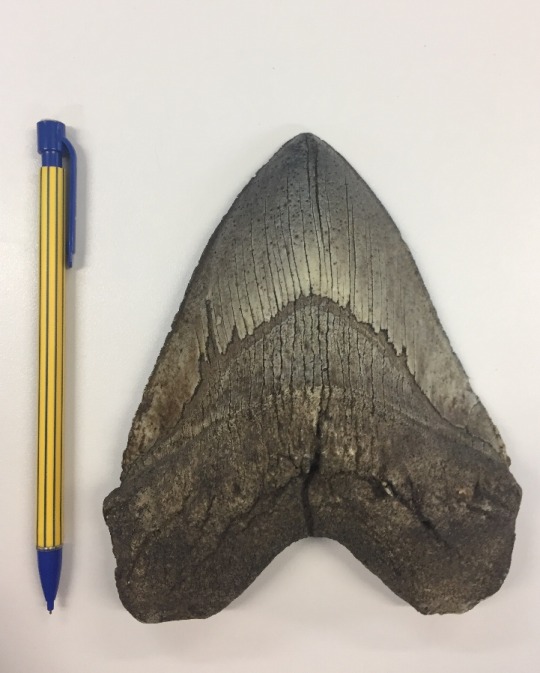
Carcharocles/Otodus megalodon tooth
#shark#megalodon#fossil#cenozoic#miocene#pliocene#otodus#carcharocles#paleontology#palaeontology#geology
34 notes
·
View notes

